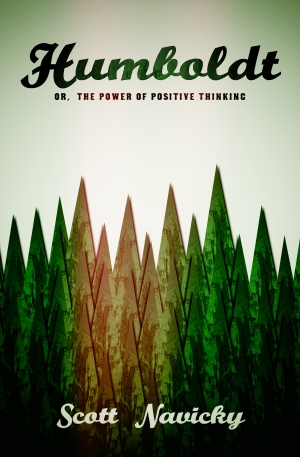
In Satires, the Roman poet Horace poses the question: “What forbids us to tell the truth, laughing?” Why not approach teaching art history the same way? What forbids us from comparing Egyptian Triad sculptures to the music videos of Houston rapper Tobe Nwigwe? Or discussing how the Hammurabi Law Code is one inch taller than Kristaps Porzingus, and thus could, theoretically, play center for the New York Knicks? If You Give Me a Lily, I’ll Make it a Field is an attempt to teach the history of western art from the Paleolithic to the Quattrocento, laughing. The book touches upon topics as diverse as the vaginaphobia of the Roman Empire, the plan to move Stonehenge to Cleveland, the intoxicating splendor of ancient Egypt, and the sensible drunkenness of ancient Greece.

Haunted by photography and fueled by failure, Carlos Spencer-Bayard is an insomniac anythingarian boozehound, who is known to his friends and family simply as “Ghost.” A keen observer of the strangemotion of his own mind, he spends his days engrossed in the daily demands of parenting (i.e. liontaming), but at night, when the noose of nightmadness tightens and the turtle of thought is flipped onto its back, he wrestles with Imagereality. Understanding Imagereality is no easy task, as images are everywhere; and wherever images go, imagetheory must follow. Thus an imagethinker is a scholar of the cultural kitchen sink: nothing is verboten. Shakespeare’s Sonnets and potential self-slaughter, Gnostic intoxication, Gérard Depardieu’s inexplicable sex appeal, Talkreality (also known as Squawkreality), drag queens, author photos, absinthe, and endlessnessnessness: everything is permissible under Imagereality’s spectacular perspectival sun.

The Iraq War? The housing market collapse? College football’s concussion crisis? How can anyone be expected to understand such complexities, especially a “horticulturally dyslexic” farmboy with an eighth-grade education and a penchant for perpetually misunderstanding, misreading, and misinterpreting the world? Born on a farm in Ohio, Humboldt is content to spend his life “outside amongst the oxygen and unhurried hydrocarbons.” But when his father’s farm is threatened with foreclosure, Humboldt is forced to save it by enrolling in college, leading him on an epic absurdist adventure through Washington politics, New York performance art, Boston blue-bloods, post-Katrina New Orleans, multiple murders, and holy resurrections. Mixing the speed and structure of Voltaire’s Candide with a heavy dose of Joycean wordplay, and a love of literary acrobatics worthy of David Foster Wallace, Scott Navicky’s debut novel assails some of modern America’s most cherished beliefs and institutions with the battle cry: “Ticklez l’infâme!”
So what can you expect from Humboldt: The Annotated Edition? To begin with, beaucoup explanations of my strange preoccupation with things like soybeans, the unself, creative secondbirths, and New Zealand rugby. There’s also instructions on how to undertake the highway scavenger hunt that’s hidden within Chapter XII, details on understanding the novel’s Ulysses-like underplot involving the history of western thought, commentary on my favorite writers, including discussions of Shakespeare’s favorite word and secondbest bed, Nietzsche’s sex life, and James Joyce’s keraunophobia, a recap of the events surrounding the arrest of Mumia Abu-Jamal, directions to a Spotify playlist where you can listen to every rap song referenced in Chapter XXXVII, and a humorous poem titled “John Ruskin Upon Spying His Wife’s Pubic Hair For the First Time on Their Wedding Night,” which begins with the lines: “What is that?!/ A CAT?”

